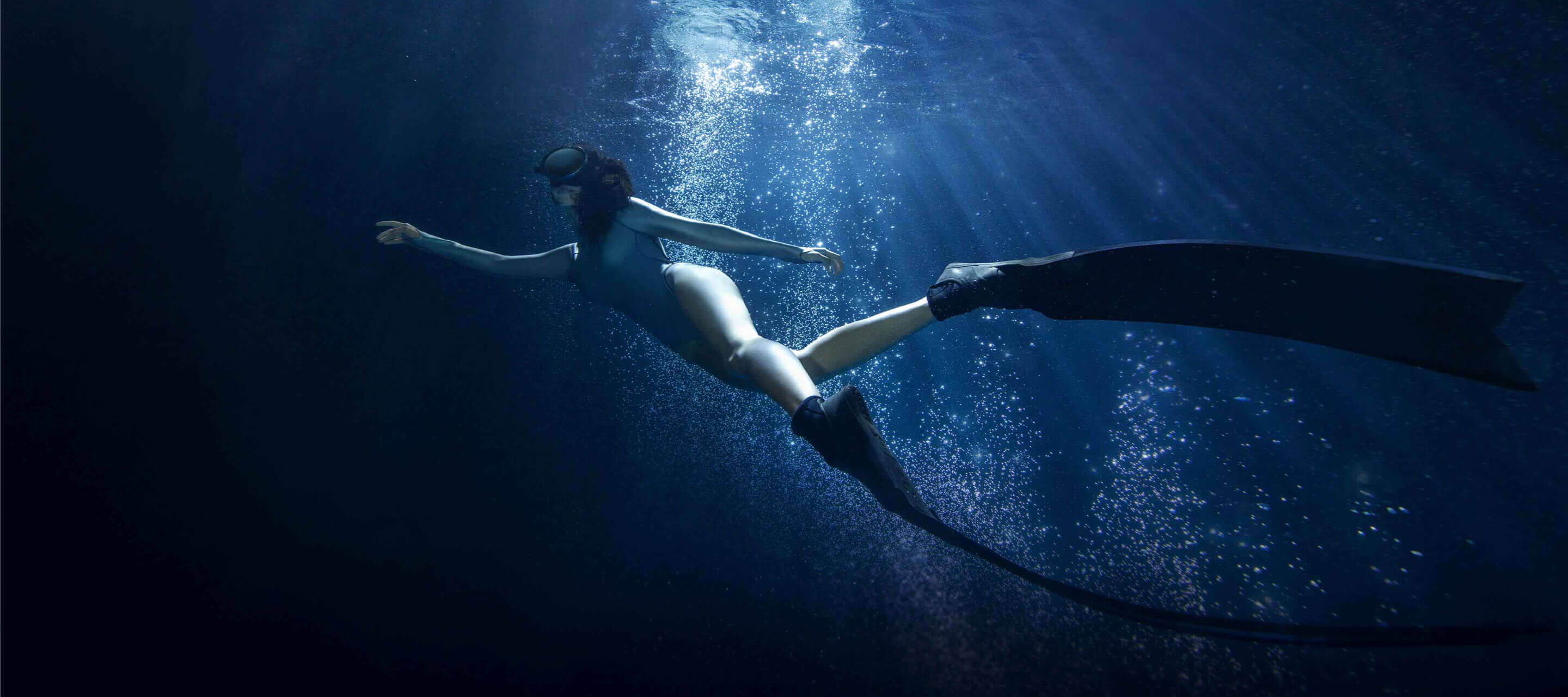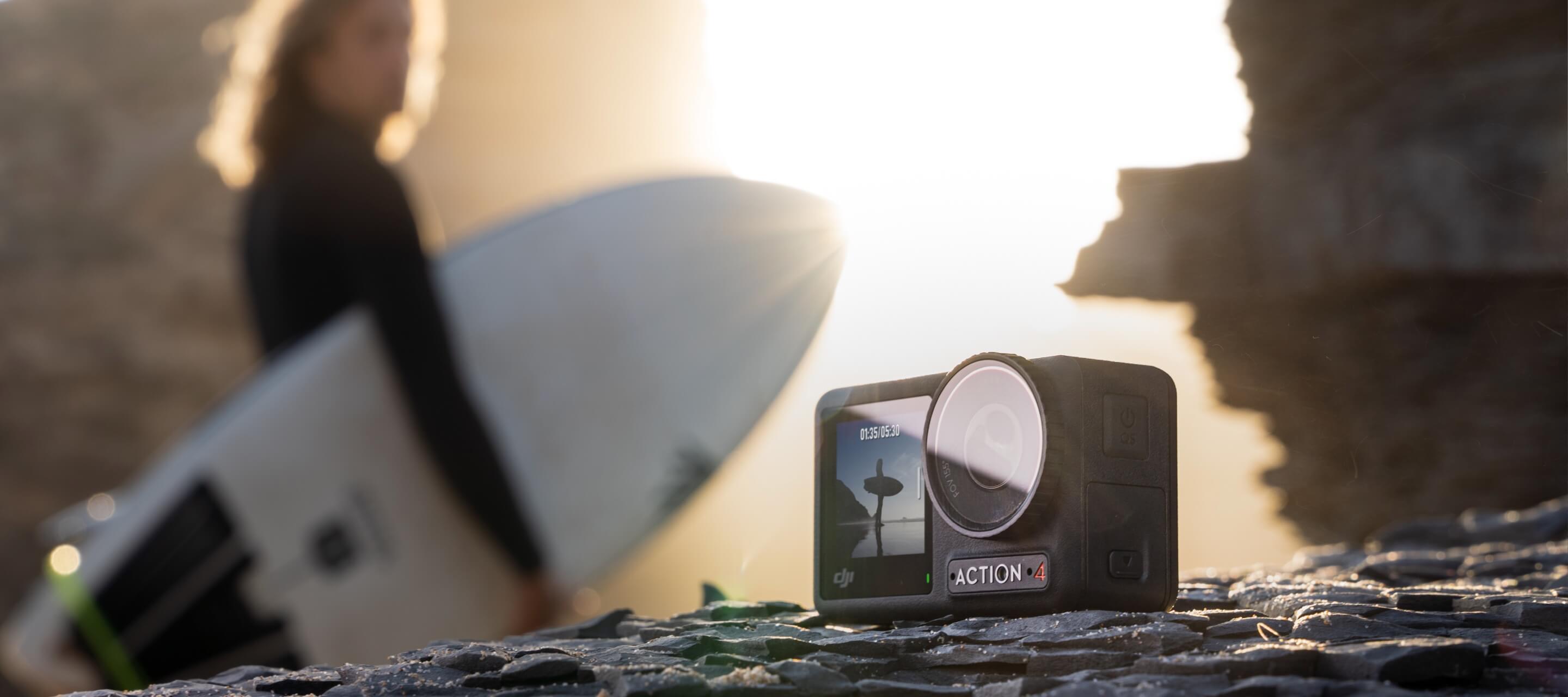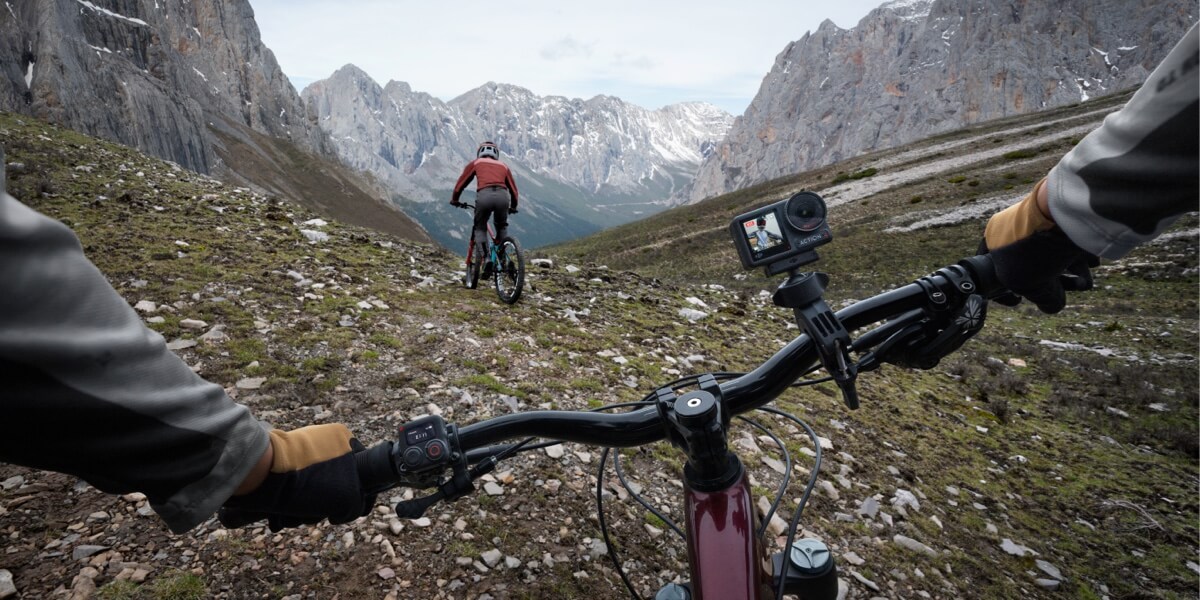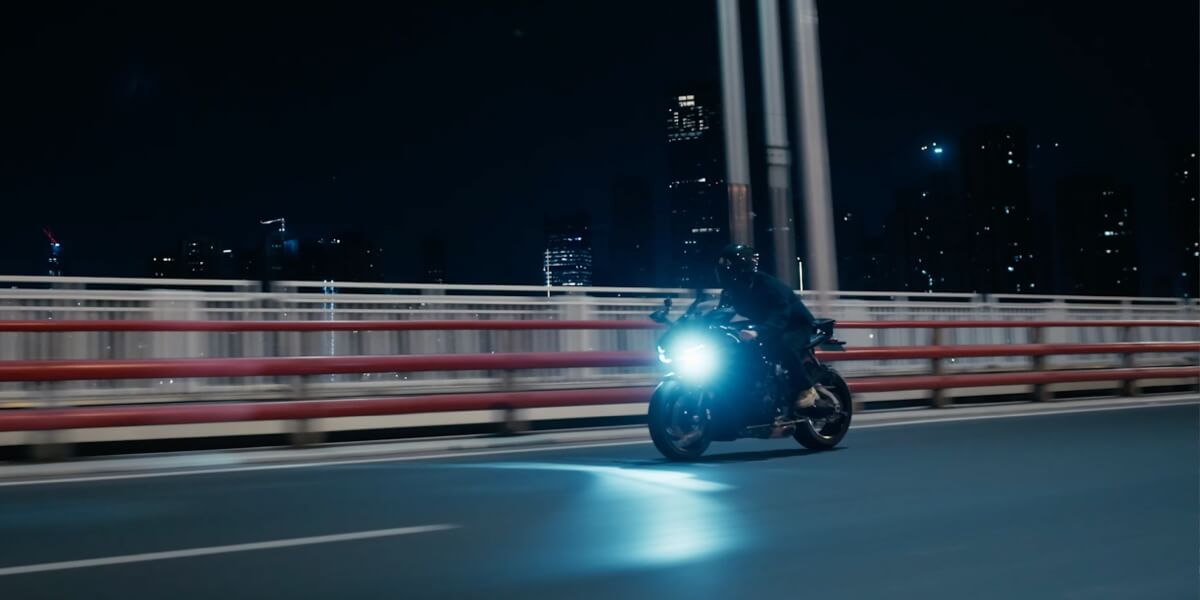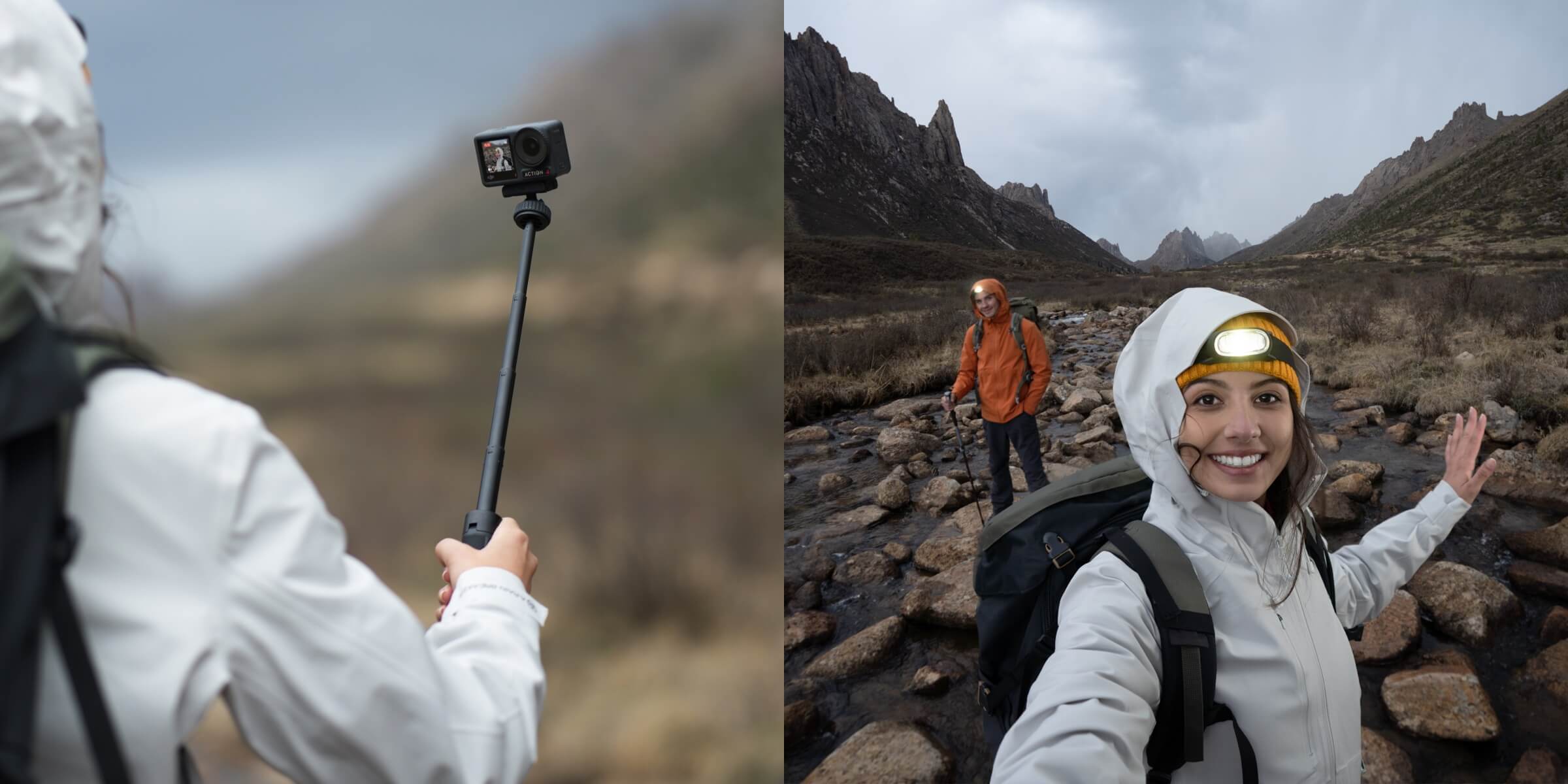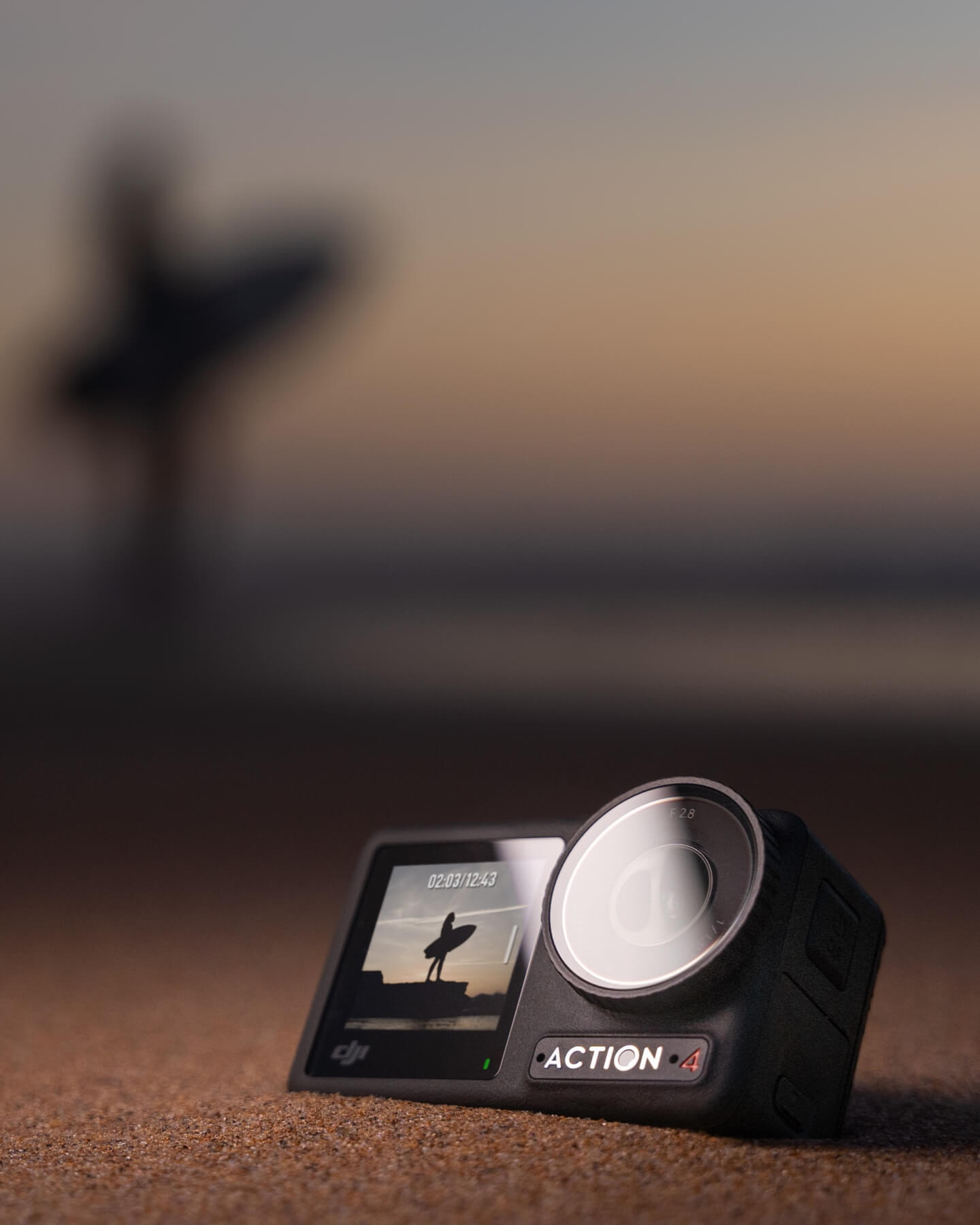
Action cameras and low-light: 5 things to know
Shop Osmo Action 4If you're an action camera user (or about to become one), you know that shooting in low-light conditions can be challenging. But did you know that with the right techniques and settings, you can still capture impressive footage in such environments? In this post, we'll guide you through the trickiest parts of setting your action camera to record in various scenarios and help you master low-light shooting.
What is considered low-light?
In photography and videography, low-light refers to environments with significantly reduced available light compared to well-lit conditions. So, this might come down to a wide range of situations, and not only the night time shooting, for example:
- Overcast days
- Indoor spaces
- Blue hours(time before the sunrise and after the sunset)
- Dusk and dawn time
- Underwater
Shooting in low-light presents unique challenges and limitations for action camera users.
Low-light conditions lack sufficient illumination, leading to underexposed footage, graininess, and loss of detail. Uneven lighting can cause dynamic range issues, resulting in a loss of details in shadows and highlights.
Low-light shooting necessitates adjustments in camera settings and techniques. Higher ISO sensitivity captures more light but introduces noise. Slower shutter speeds compensate for low-light but may cause jittering. Fast-moving subjects become more challenging to capture due to reduced visibility.
Why shoot with action in low-light
Modern action cameras are continually improving their low-light capabilities with features like improved image sensors, higher ISO ranges, and advanced noise reduction algorithms. These advancements enable action cameras to capture better quality footage in challenging lighting conditions, even in the absence of external lighting sources.
For example, DJI’s latest Osmo Action 4 camera comes with a 1/1.3″ image sensor and a 2.4μm pixel size (the bigger the pixel size, the more lights come in), which delivers exceptional shots loaded with detail.
It's important to note that while action cameras can produce visually compelling footage in low-light, their sensors and lens apertures might not deliver the same level of low-light performance as professional cameras or dedicated low-light setups. Nonetheless, action cameras provide a convenient and accessible option for capturing action-packed moments in challenging lighting situations.
Settings that affect low-light shooting
When shooting with an action camera in low-light conditions, several factors come into play that can affect the quality and outcome of the footage. Let's explore some of the key factors:
- ISO sensitivity: ISO determines the camera's sensitivity to light. In low-light situations, increasing the ISO can make the camera more light-sensitive, allowing for brighter footage. However, this can also introduce digital noise, which can degrade image quality. Modern action cameras often offer adjustable ISO settings, giving users control over balancing brightness and noise.
- Shutter speed (SS): Shutter speed determines how long the camera's shutter remains open to capture light. In low-light, a longer shutter speed is often needed to gather enough light for a properly exposed image. However, using longer shutter speeds can lead to jitter when there is movement in the frame. To avoid the blurred effect in action shots, it's essential to find a balance between exposure and freezing the action or consider using stabilization techniques.
- Stabilization: Action cameras often include built-in stabilization technology such as electronic image stabilization (EIS). This features help reduce camera shake and improve the overall quality of footage, especially in low-light conditions where longer exposures are required. Stabilization can make the footage appear smoother and less blurry, enhancing the viewing experience.
- Field of View (FOV): Action cameras typically offer a wide-angle lens, allowing for a broader field of view. While wide-angle lenses are great for capturing action and expansive scenes, they tend to let in less light compared to narrower lenses. In low-light, a wider FOV can result in lower overall brightness. Consider adjusting the FOV or using compatible accessories to mitigate the potential decrease in light.
- Aperture: The aperture of the camera lens determines the amount of light that reaches the image sensor. Action cameras generally have fixed apertures, meaning they can't be adjusted manually.
- Noise reduction: Action cameras often apply noise reduction algorithms to mitigate the graininess that can occur when shooting in low-light. While noise reduction helps improve image quality, it can also lead to a loss of fine details or a smoothening effect on the footage. Understanding the camera's noise reduction settings and finding the right balance is crucial for achieving desired
- External lighting: In challenging low-lightsituations, the use of external lighting sources can significantly improve footage quality. Action cameras often offer compatible accessories like LED lights or mounts to attach external lights. These additional light sources can illuminate the scene, increase exposure, and enhance the overall visibility and clarity of the footage.
Understanding and considering these factors play a crucial role in achieving the best possible results when shooting with an action camera in low-light conditions. Experimentation, familiarity with the camera's settings, and adapting techniques to suit the lighting environment can help capture captivating footage even in challenging lighting scenarios.
Best action camera settings for low-light scenarios
When shooting with an action camera in low-light conditions across different scenarios, it's important to consider the specific requirements and challenges of each situation. In general, using an action camera tailored for low-light, like DJI Osmo Action 4, and keeping it on auto settings can often yield decent results.
However, let’s go over some recommendations for various scenarios, including ISO ranges, ideal shutter speed, and trade-offs between capturing light and reducing jitter:
Low-light settings for mountain biking and road cycling
- ISO: Start with a moderate ISO setting, typically around ISO 100 to 1600. Adjust it higher if needed, but be cautious of increased noise.
- Shutter Speed: Aim for a shutter speed of at least 1/120th of a second or faster to reduce jittering. If the scene is too dark, consider increasing ISO or using external lights.
- Trade-offs: Balancing exposure and motion blur can be tricky. Prioritize freezing the action with a faster shutter speed, even if it means sacrificing some light. Experiment with different ISO values and evaluate the trade-offs between noise and motion blur.
- Mounting options: consider using chest mount to decrease shakiness. Try to avoid using the handlebar mount, because the handlebar vibrations are too impactful and that situation would require higher shutter speed, which will also result in terrible lowlight footage.
Low-light settings for motorcycling
- ISO: Start with a medium ISO range, around ISO 100 to 1600, depending on the available light. Adjust it higher if needed, considering the camera's noise performance at higher ISO settings.
- Shutter Speed: Aim for a faster shutter speed of at least 1/60th of a second or faster to freeze the motion of the motorcycle and reduce blur. Adjust ISO or use external lights if the scene is too dark.
- Trade-offs: Capturing the speed and action of motorcycling in low-light can be challenging. Prioritize freezing the motion with a faster shutter speed while adjusting ISO to maintain acceptable brightness without excessive noise.
Low-light settings for diving
- ISO: In underwater environments, where light is limited, consider using higher ISO values, such as ISO 100 to 800. Keep in mind the camera's noise performance and adjust accordingly.
- Shutter Speed: Depending on the speed of the subject or movement in the water, use an auto shutter speed, or experiment with range starting from 1/120th of a second to avoid excessive motion blur. Adjust accordingly based on the specific conditions.
- Trade-offs: Balancing ambient light, artificial light sources, and capturing the motion of marine life or divers can be challenging. Experiment with different ISO and shutter speed combinations to find the right balance between brightness and motion blur reduction.
Low-light settings for vlogging
- ISO: Depending on the available light sources, start with a moderate ISO setting, such as ISO 100 to 1600. Adjust it higher if necessary, considering the camera's noise performance.
- Shutter Speed: Use a shutter speed of 1/30th to 1/60th of a second to maintain a natural look and reduce motion blur while capturing movement. Adjust ISO or use additional lighting for improved visibility.
- Trade-offs: low-light conditions can lead to increased noise and reduced visibility in vlogs. Balancing exposure while minimizing motion blur requires finding the right combination of ISO, shutter speed, and potentially incorporating external lighting for better results.
However, understanding the camera's capabilities and manually adjusting settings can allow for more precise control and better adaptation to specific low-light scenarios. Experimenting with different ISO, shutter speed, and lighting options will help achieve optimal results in various shooting situations.
Osmo Action 4 Low-light Cheat Sheet
|
|
One for all |
MTB/Road cycling |
Motorcycling |
Diving |
Vlogging / running |
|
Video resolution |
4K |
4K |
4K |
4K |
4K |
|
Framerate |
30fps |
25-30fps |
25-30fps |
25-30fps |
25-30fps |
|
Shutter speed |
Auto |
Auto |
Auto |
Auto |
Auto |
|
ISO |
Auto |
Auto |
Auto |
Auto |
Auto |
|
low-light Enhancement |
On when possible |
On when possible |
On when possible |
On when possible |
On when possible |
|
Stabilization (EIS) |
RockSteady |
RockSteady |
RockSteady |
RockSteady |
RockSteady |
|
Field of View (FOV) |
Wide / Ultrawide |
Wide / Ultrawide |
Wide / Ultrawide |
Wide |
Wide |
|
Exposure Value (EV) |
Auto |
Auto |
Auto |
Auto |
Auto |
There are plenty of video tutorials available for action camera settings in low light. However, the camera you select could play a crucial role in the results you obtain.
Best action camera for low-light recordings
Osmo Action 4: Set the tone
If you enjoy exploring the world in low-light conditions, the DJI Osmo Action 4 is a noteworthy choice. It delivers high-quality video even in dimly lit environments. The convenience of a front touch screen allows for easy self-recording, while its robust construction ensures durability even during rugged use.
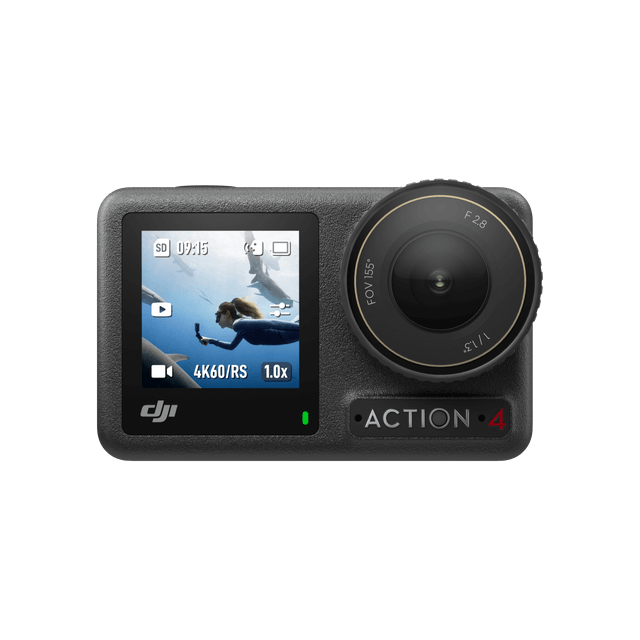
- 1/1.3-inch CMOS Sensor: The biggest improvement of the Action 4 versus its predecessor is the sensor. By allowing more light to enter the sensor, it effectively improves low-light performance, resulting in brighter, clearer, and more detailed images. Additionally, the larger sensor contributes to a wider dynamic range, preserving details in both highlights and shadows.
- EIS Priority in Low-light: enable EIS priority for better stabilized low-light footage.
- Low-light Imaging mode: Action 4 incorporates a specialized low-light Image Enhancement, the camera automatically detects low-light environment and adjusts exposure parameters intelligently to improve image quality.
- 10-bit & D-Log M Color Performance: Action 4 integrates impressive 10-bit color depth and the D-Log M color profile. This combination enables the camera to capture a wider range of colors and tones, ensuring accurate and vibrant representations even in low-light environments.
- 155 degrees field of view: Combined with excellent digital stabilization, the camera ensures steady footage and minimizes blurriness, resulting in high-quality, well-lit images and videos, even in low-light.
Consider the Osmo Action 4 if you seek reliable performance and excellent low-light capabilities in an action camera.
Osmo Action 4
Osmo Pocket 3: For moving moments
This pocket camera offers a range of impressive features and exceptional performance for capturing moments on the go. Its remarkable low-light capabilities ensure stunning visuals even in challenging lighting conditions.
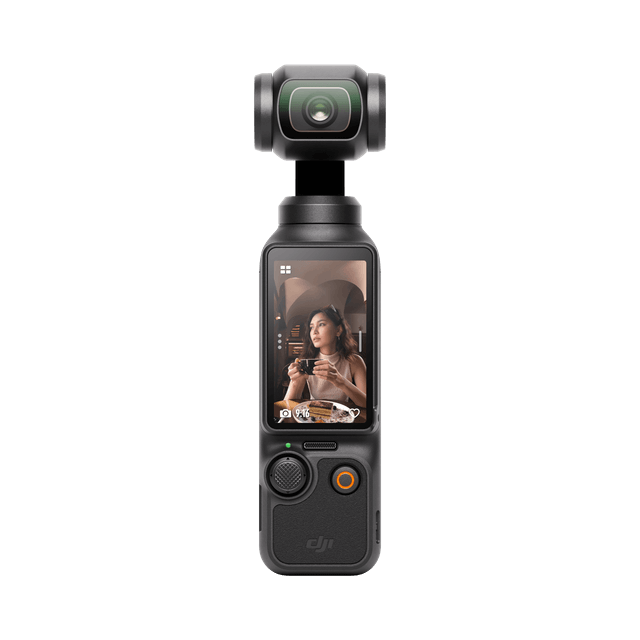
- Low-Light Video mode: With its dedicated Low-Light Video mode, Pocket 3 is adept at capturing high-quality footage in dimly lit environments. Whether shooting under streetlights or indoors, the camera optimizes its settings to deliver exceptional video quality. It supports 4K resolution and offers an ISO range of 50-16000, resulting in clear and well-exposed videos.
- 1-inch CMOS censor: Powered by a 1-inch CMOS sensor, this pocket camera takes its low-light capabilities to the next level. The larger sensor size allows for improved light gathering, enhancing sensitivity and minimizing noise in low-light situations. The advanced sensor technology ensures exceptional image quality with accurate colors, sharp details, and impressive dynamic range.
Osmo Pocket 3
3 Tips for better low-light shooting
In addition to the practical suggestions above, try these tips and techniques for improving your low-light footage:
- Try Gyrodata: besides image stabilization technology, some action cameras like Osmo Action 4 have built-in gyrodata.You can safely turn the EIS off while using Action 4 and stabilize the footage with gyrodata in post-editing. Features like this compensate for hand movements or camera shake, allowing you to capture brighter and sharper images
- Experiment with your settings: there’s more that one way to capture your video in low-light, so find the right balance between image quality and noise reduction with different ISO settings. Additionally, adjust shutter speed while maintaining a steady hand or utilizing stabilization techniques.
- Utilize available light: Instead of relying solely on your camera or artificial lighting, try to make the most of available natural or ambient light sources. Look for interesting light patterns, and streetlights to add a unique and atmospheric touch to your shots.
Conclusion
Mastering your action camera is essential, especially if you want to capture impressive footage in low-light environments. You can still produce visually compelling footage, even in the absence of external lighting sources. To sum up, here are five things to know when shooting in low-light with an action camera:
- low-lightrefers to any environment with significantly reduced available light compared to well-lit conditions.
- Adjusting ISO sensitivity, shutter speed, stabilization, noise reduction, and field of view is essential when shooting in low-light.
- Modern action cameras are continually improving their low-lightcapabilities, but they might not deliver the same level of low-light performance as professional cameras.
- DJI Osmo Action 4 is one of the outstanding action camerasfor low-light, currently available on the market in 2023.
- Experiment with yourcamera's settings and find the right balance for your intended results when shooting in low-light.
